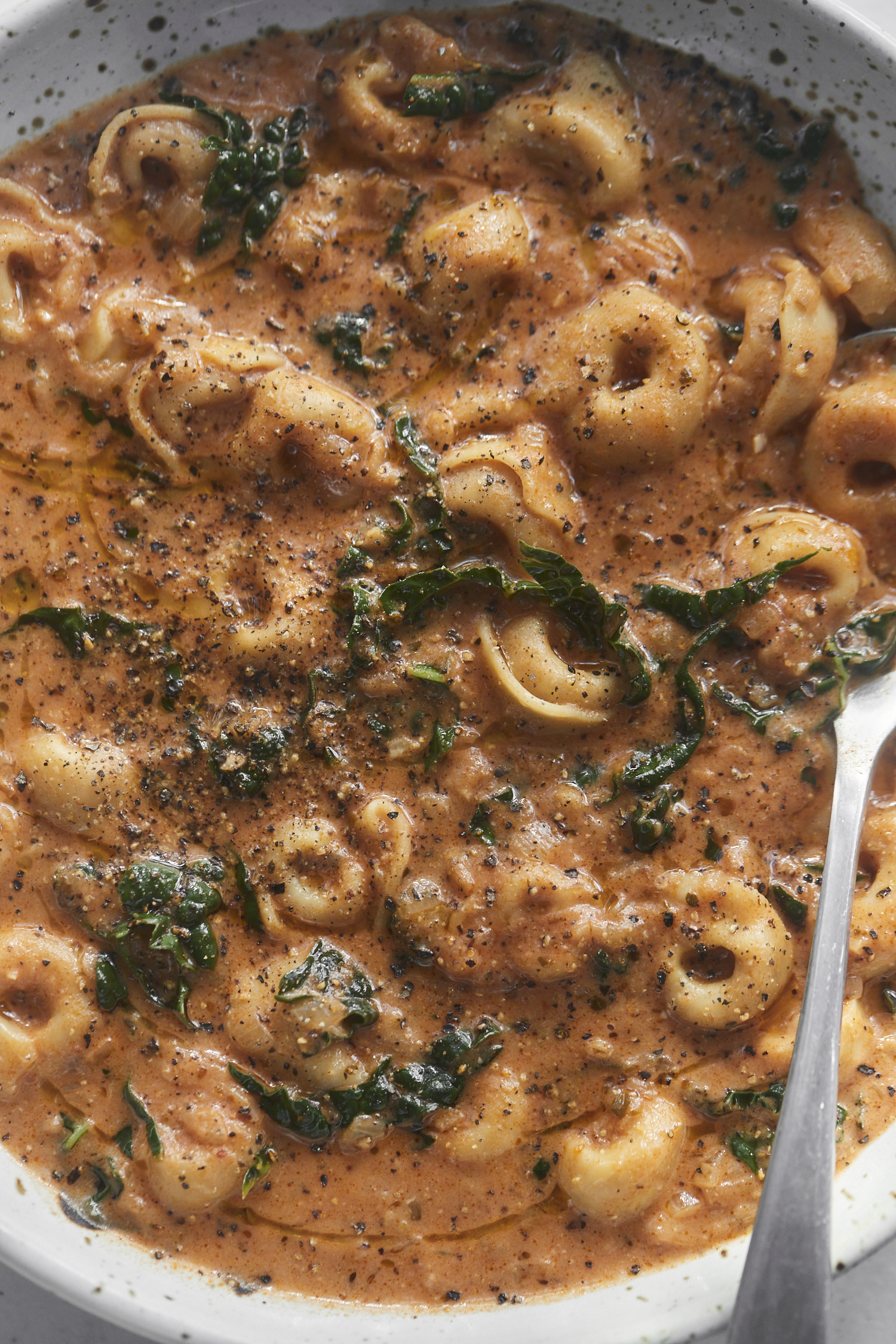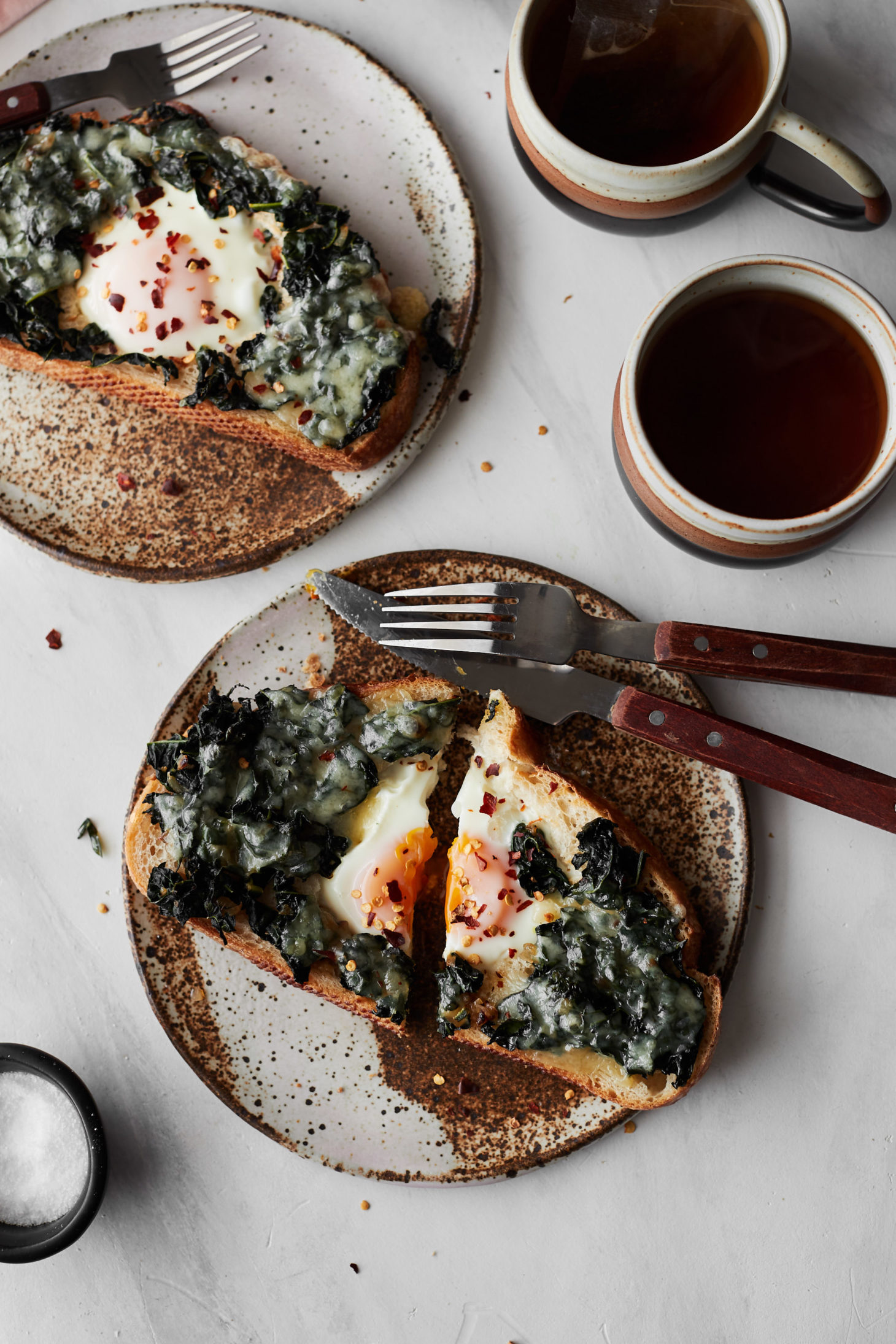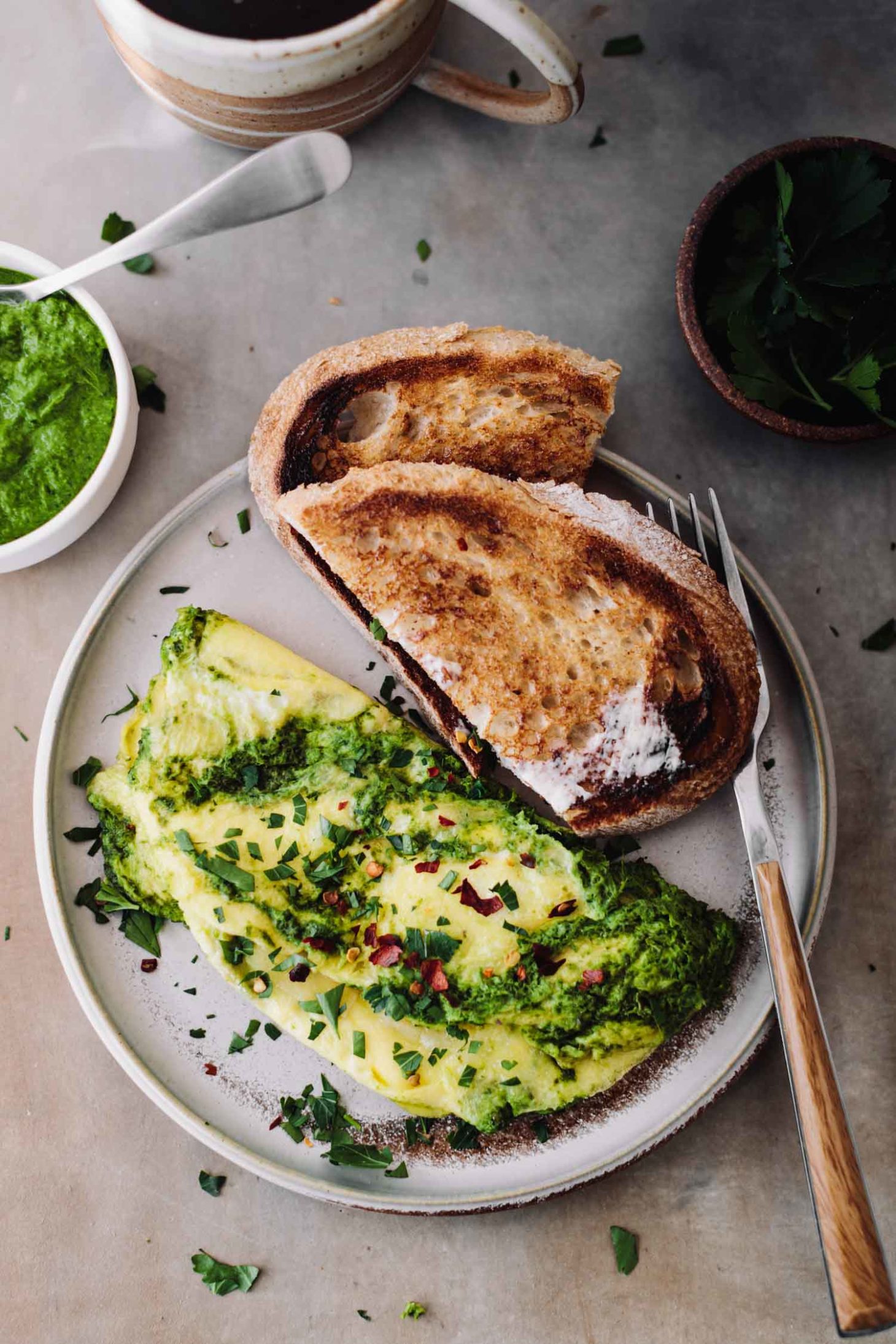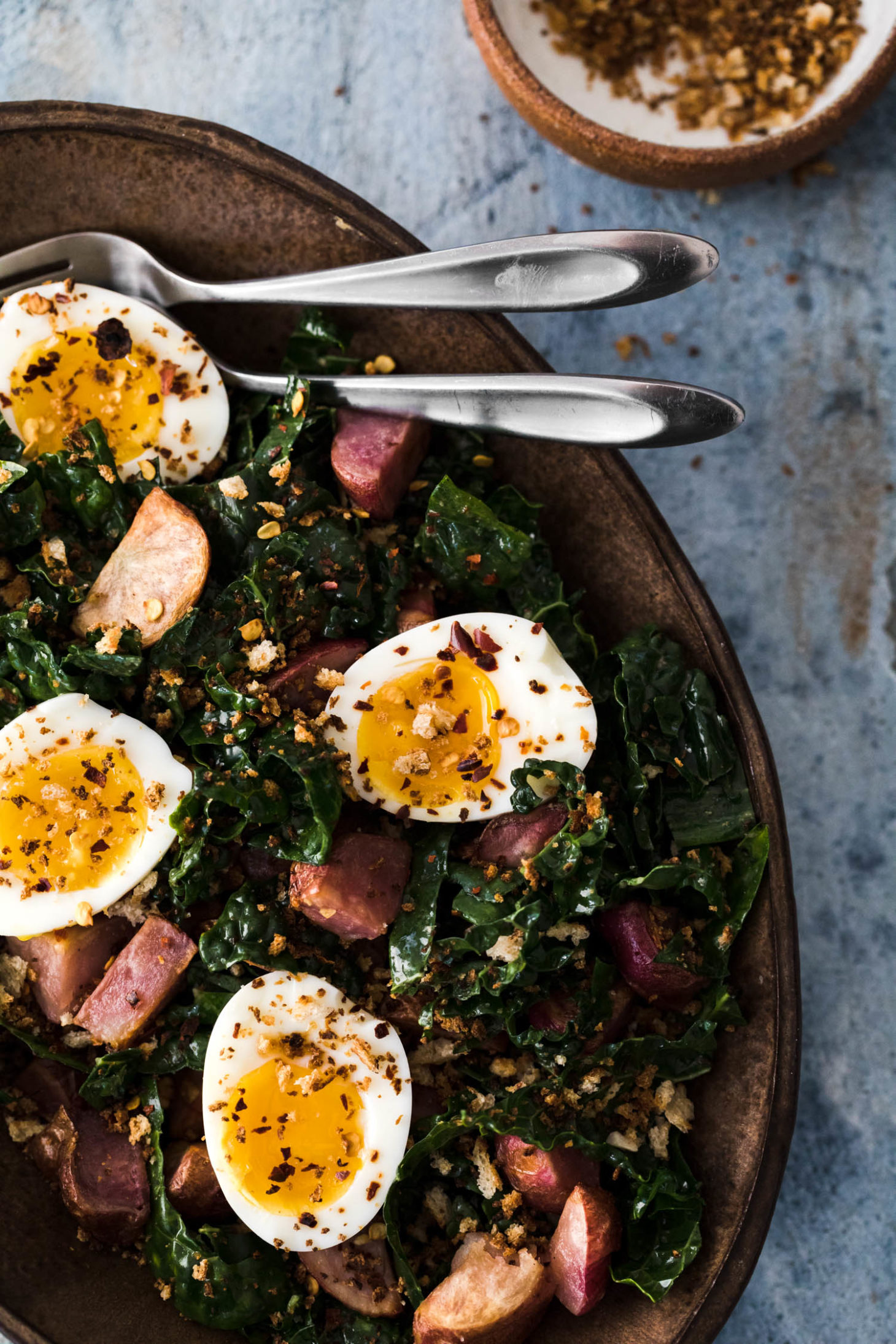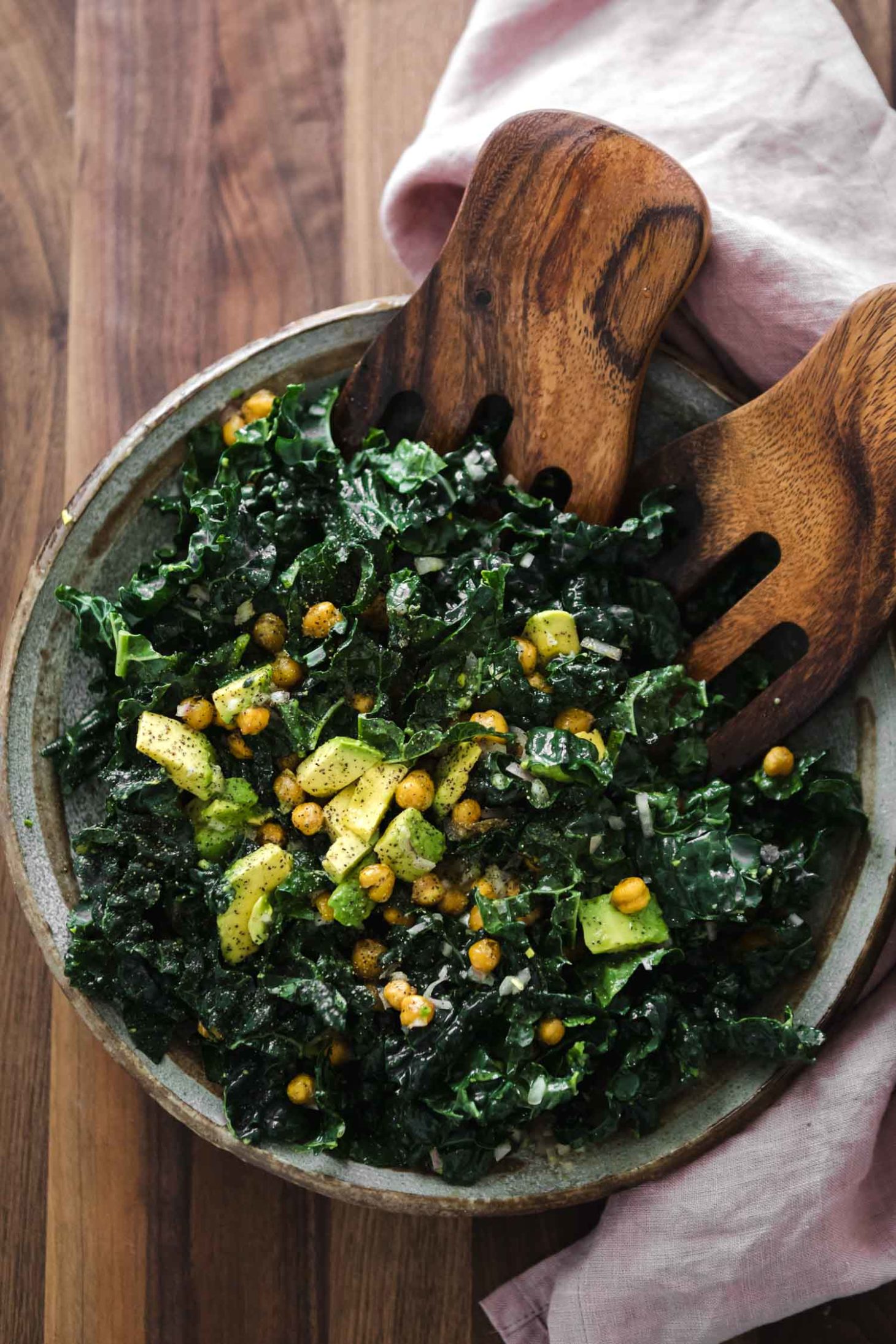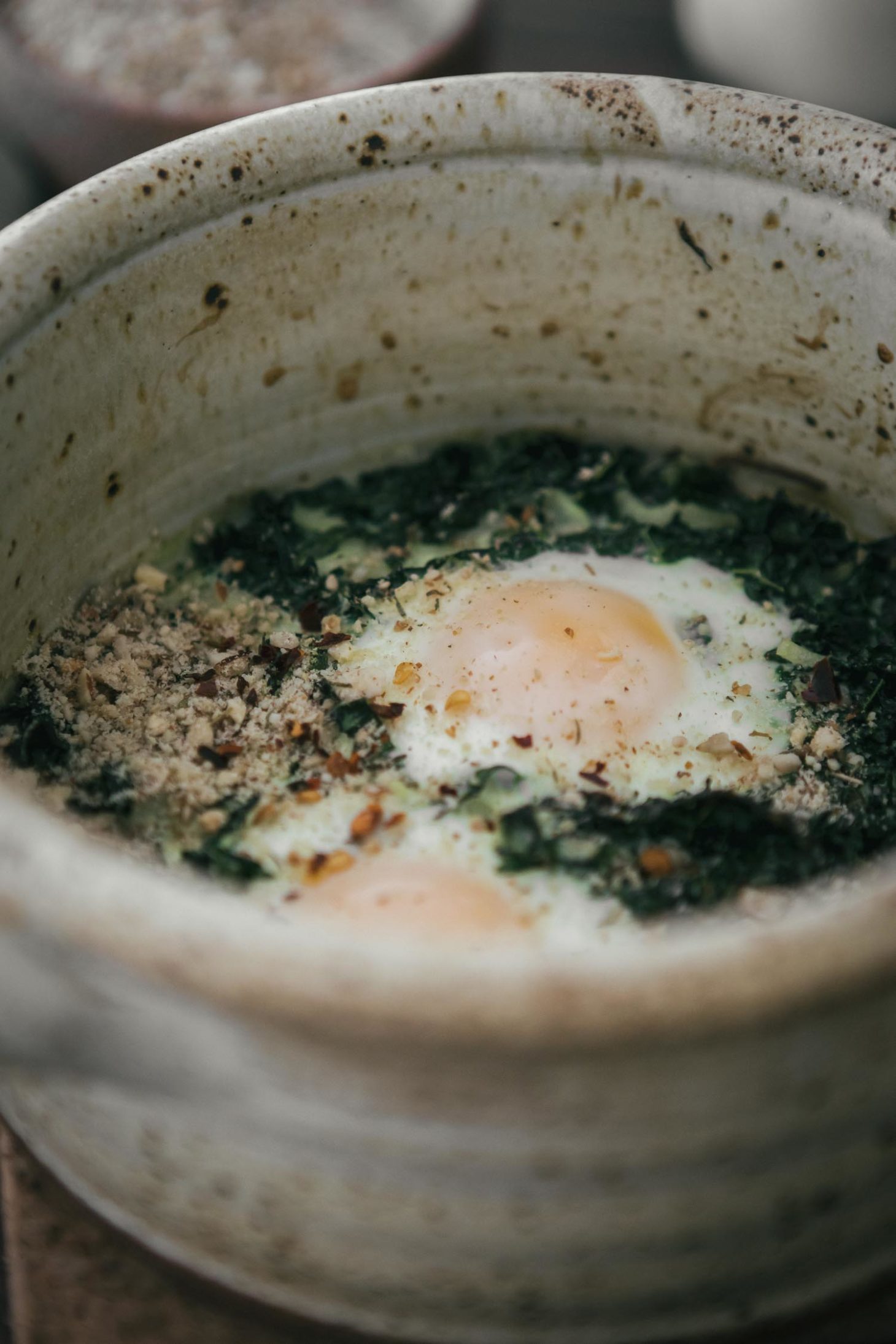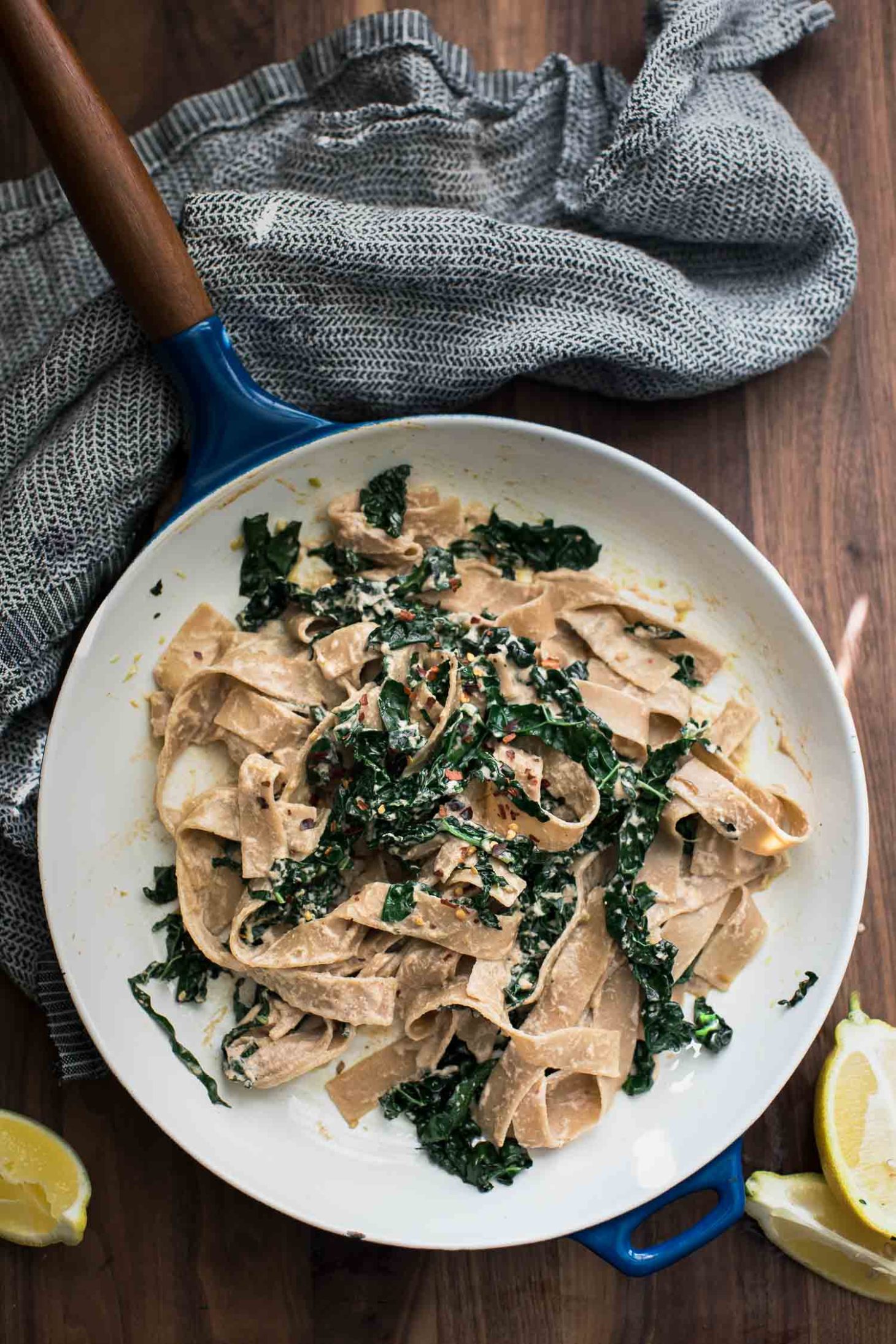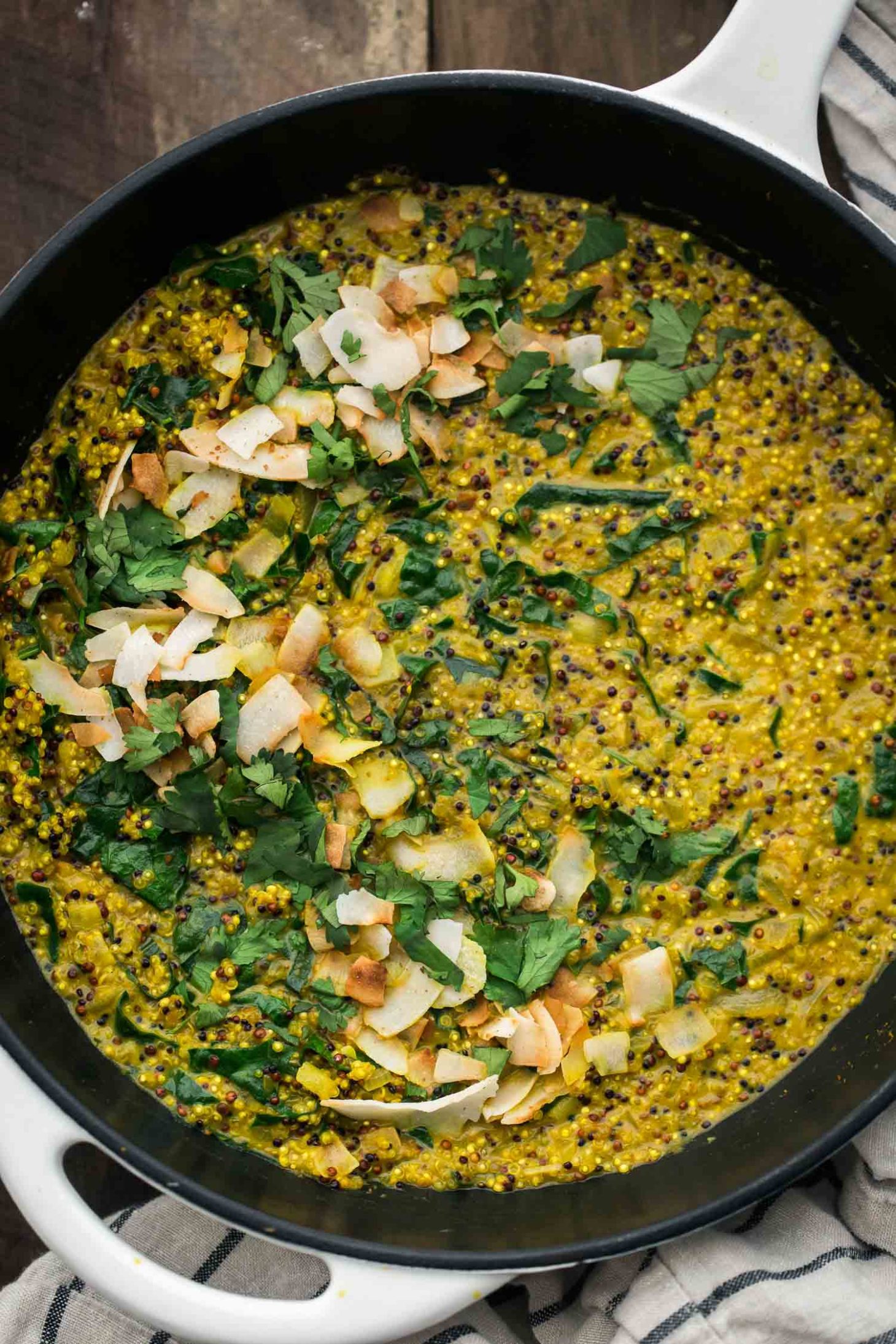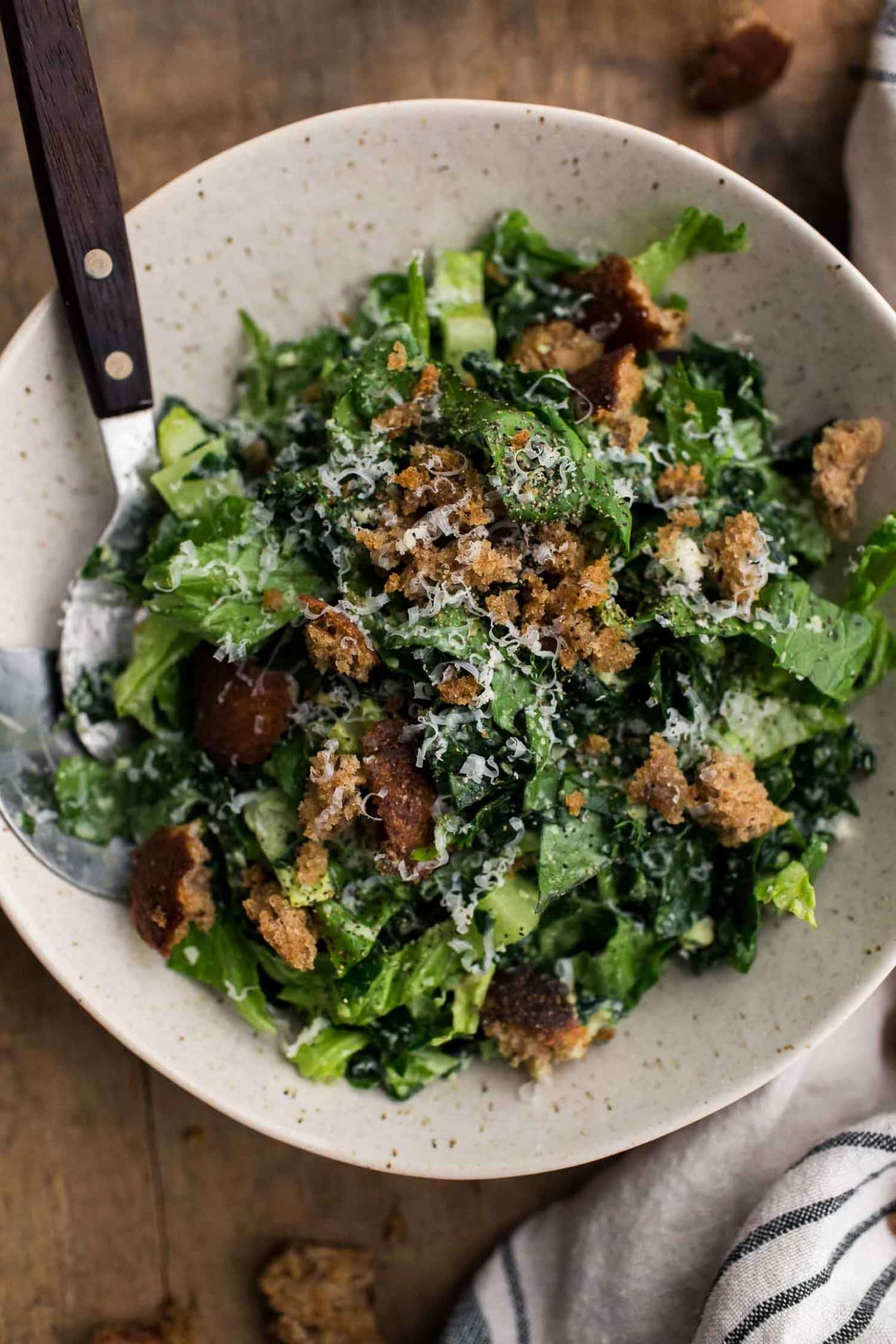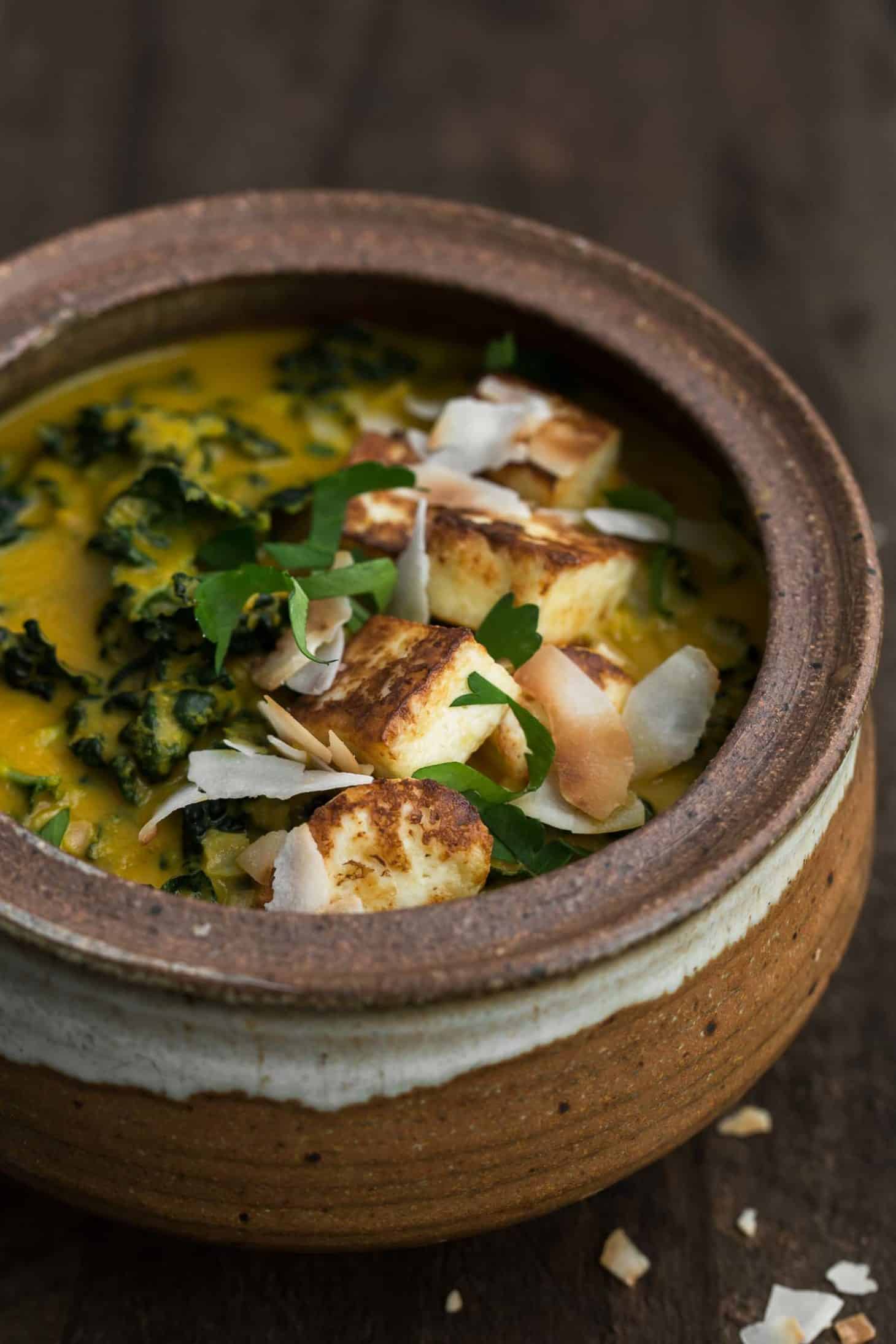

While I seem to always lump kale in with spinach and swiss chard, kale is actually part of the cabbage family. I find that compared to spinach and chard, kale is a bit more earthy, with a slightly bitter flavor. Kale is at its best in the cooler weather, as it becomes a bit sweeter with cool air and frost. I primarily use Lacinato kale. The flavor is on the sweeter side and the texture can be a bit softer than other varieties.
Kale can be frozen via blanching for two minutes, followed by an ice bath, patting excess moisture off, then putting in a freezer safe container. Like Swiss chard, kale is a delicious addition to stews, risottos, and enchiladas in the winter. While there is a lot of potential for raw kale dishes, you may find the taste a bit overpowering at first. Instead, I highly suggest making a warm kale dish, and gradually working it into your meals.
Fall/Winter
Kale is a wonderful green to cook in stir-fries, skillet dishes, or stews because it retains a bit of texture. This hearty green can also be eaten raw in salads.
Look for kale with crisp, firm leaves, and stems without brown or yellow spots. The greens should not look wilted.
Store in an airtight bag up to a week and only wash right before using.
Lacinato (dinosaur kale)
Red Russian Kale
Curly Kale
Scarlet
